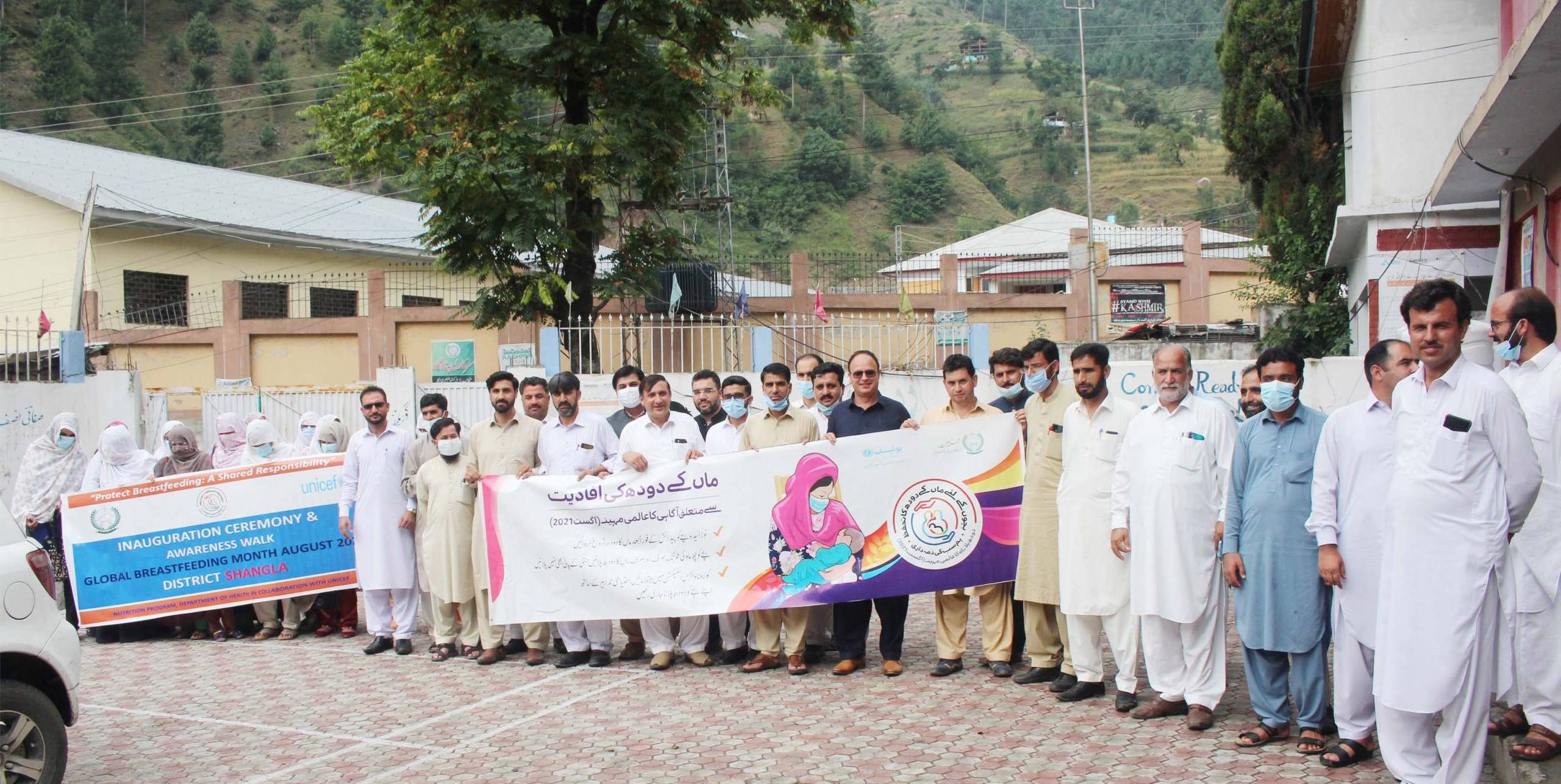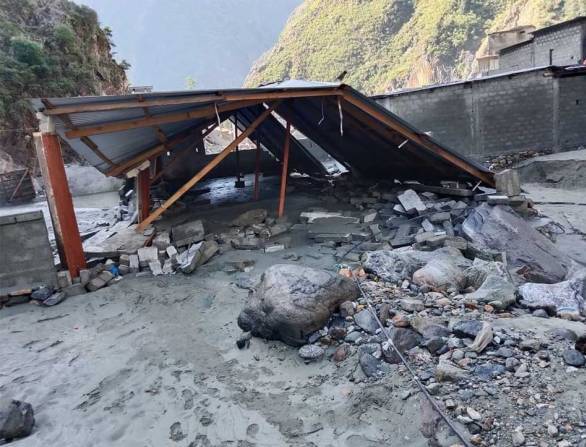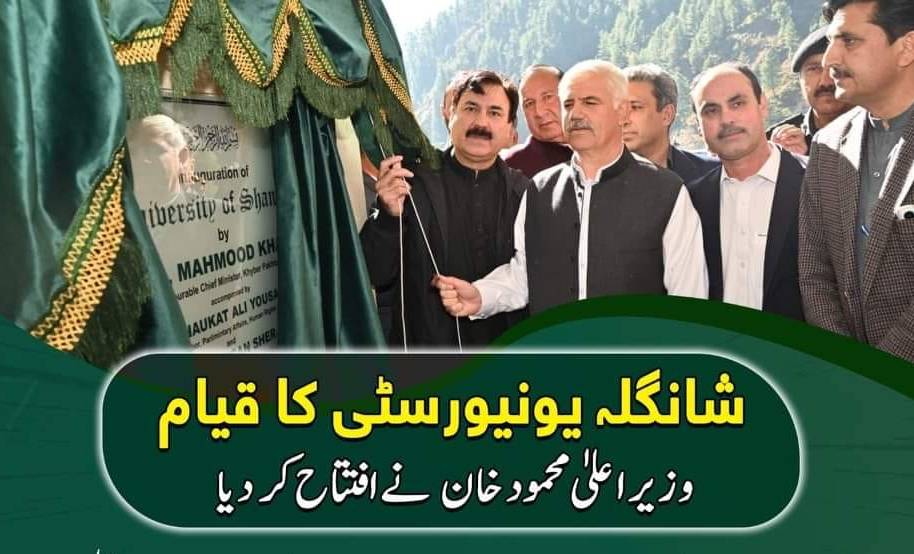People in Shangla used water is hazardous to health as a majority of the local people used untested water, supplied to them often gets mixed with sewage due to passage of the pipelines through the drains.
Shangla is a mountainous district and 70 percent of its population living in the hilly areas who consume natural springs and streams water, while over 190 government-run gravity water supply schemes across the district had a very faulty distribution system.
Most of the lines, supplying water to Bisham, Puran, Chakesar, Shahpur, and Karora, pass through the drains constructed along the roads, they added.
“Due to the absence of a proper check, people take connections directly from the mains supply lines, thus damaging them,” Shahid Khan, a worker of the public health engineering department, said, adding this allowed sewage to seep into the water pipelines.
Water supply pipelines connected to the households in the parts of the district Shangla, including Bisham, Puran, Chakesar, Shahpur, Karora are installed in the drains by locals and due to the leakage of pipe, pollution from sewage lines intrusion into drinking water supplies and caused spreads water-borne disease.
“I have deposited Rs 370 to the public health engineering department for water supply connection but despite the passage of two months it has been failed to provide the safe drinking water to us,” Fazal Subhan, Afghani, a resident of Aloch Puran, said.
He said, like him, the entire tehsil headquarters of Puran have been facing acute water shortage since the centuries-old water supply schemes damaged.
According to the Public health engineering department, record in Puran and Martung tehsil, two Tubewell schemes in Puran tehsil and one in Martung will be made functional very soon.
Wakeel Khan, a local resident, said about 30 per cent of people of Bisham consumed water supplied to them from the Indus and Khan Khwar rivers, where the drains of the entire city got emptied.
He said drinking water was a basic life necessity, but due to lack of proper management, distribution and construction of water tanks at inappropriate places, a number of residents had been deprived of the fundamental right.
Mian Raham Ghafar, a local environmentalist told Dawn that there is no mechanism for covering the water sources and pipes are directly installed.
“There is no proper distribution mechanism for water as at mostly places locals people have made arrangements of water supply through low quality of plastic pipes on their own which are unhygienic because the pipelines installed either inside the drains or along the drains,” The environmentalist, said and added that the contaminants enter to these pipes when they break in the drain and along the drain.
He said, rusted steel and low-cost pipelines caused spreads of different types of allergies among human beings when they used the water.
He claimed that Cholera, Typhoid, Hepatitis, and dysentery are frequently reported in Shangla due to the consumption of unsafe and
contaminated water.
DRY SPRINGS:
After excavation of tunnel for 17 Megawatt Power project in Karora, 5 natural springs in Donai area of Shangla have been dried up which has forced a massive population to bring water drinking and domestic use from 2 Kilometer downriver.
Nisar Ahmed Khan, a local social activist, said an acute shortage of water increased their miseries and their women fetch water from a long distance spring since their local springs have dried up.
A water supply scheme approved for Donai village under Community Driven Local Development in 2017 is just limited to document available with The Northern Post.
The Documents said, the project had been completed in March 2017 and Rs 598,391 utilised on it but there is no scheme on the ground in the village for which the local people submitted their complaints to government and concerned authorities.
Water test reports of the PHE department said that water of all the major water supply schemes of PHE have been tested yearly and safe for drinking.
Nahir Ali, a local in Bisham, said the water level was down in their area spring first time in the past two decades by creating an acute water shortage in the area.
Fazal Elahi, A geologist told The Northern Post that the main reason for water level felling down is earthquakes in the Northern Region as it located in fault zone where natural springs change their ways after quake jolts and damage of paths of water.
Women in Shangla says, they fetch water from faraway springs and carry on heads in a pitcher due to which they have fallen ill and their hair falls.
Research of BioMed Research International published in August 2017, says due to alarming increase in population and rapid industrialization, drinking water quality is being deteriorated day by day in Pakistan
Chemical and microbial aspects of water samples collected from four cities of Khyber Pakhtunkhwa, that is, Abbottabad, Mardan, Peshawar, and Mingora, were analyzed. More than 55% of all samples from these cities were highly contaminated with microbes. In KP, iron contamination was enlisted as the second major contamination. In Peshawar and Mardan more than 38% and 67% of samples were contaminated with iron, respectively. The samples of drinking water collected from various reservoirs (streams, tube wells, and water storage tanks)
in Kohat (KP) showed that samples collected from tube wells in Shakarda, Ara Khail, and Lachi were found to be safe for drinking but storage tanks and wells were highly contaminated. The drinking water quality of Charsadda (KP) was also poor as in other regions and indicated that the concentration of sulfate, nitrate, and heavy metals was above the threshold level and they were contaminated with coliform bacteria.
Yousaf Khan, Executive Engineer, PHE Shangla told The Northern Post that the biggest challenge for him is that local people wanted drinking water but reluctant to pay bill and taken illegal connections.
He said, they are striving to make proper mechanisms for the distribution and people could pay the bill too then they would have the value of water.
He said, there are two places Maira and Gumrash in the district where is no water source and that areas people lives at standstill, however, a tubewell scheme is underway in Maira.
“This is the fact that people installed their water supply pipelines in drains and unsafe paths which water gets contaminated and when people consumed they fall ill of different water-borne disease,” the PHE Shangla head, explained.
He said, proper management and awareness for the public is essential to control the water-borne disease in the region.
Assistant Commissioner, Alpuri, Shangla, said that the deficiency at the PHE side was a fact as the water consumed the entire district headquarters in Alpuri has never been tested and water supply lines are broken on the way and neither water tank constructed at the source nor safety for water supply scheme.
He said, he has severally held meetings with PHE department and asked its officials to ensure clean drinking water to the public and restore the water supply lines quickly.
Access to potable water is a basic right implied in the Constitution. The Constitution of Pakistan secures several basic fundamental rights of citizens. Article 9 relating says, “No person shall be deprived of life or liberty, save in accordance with the law.
In Shangla except 192 of government schemes, the water used by locals never been testes chemically, physically and micro-biologically even the Indus river, Khan Khwar, Kana Khwar rivers that consumed a huge population of the district.
Also the absence of proper management and lack of distribution caused the spreads of waterborne disease and created acute water shortage in the district.
End.







